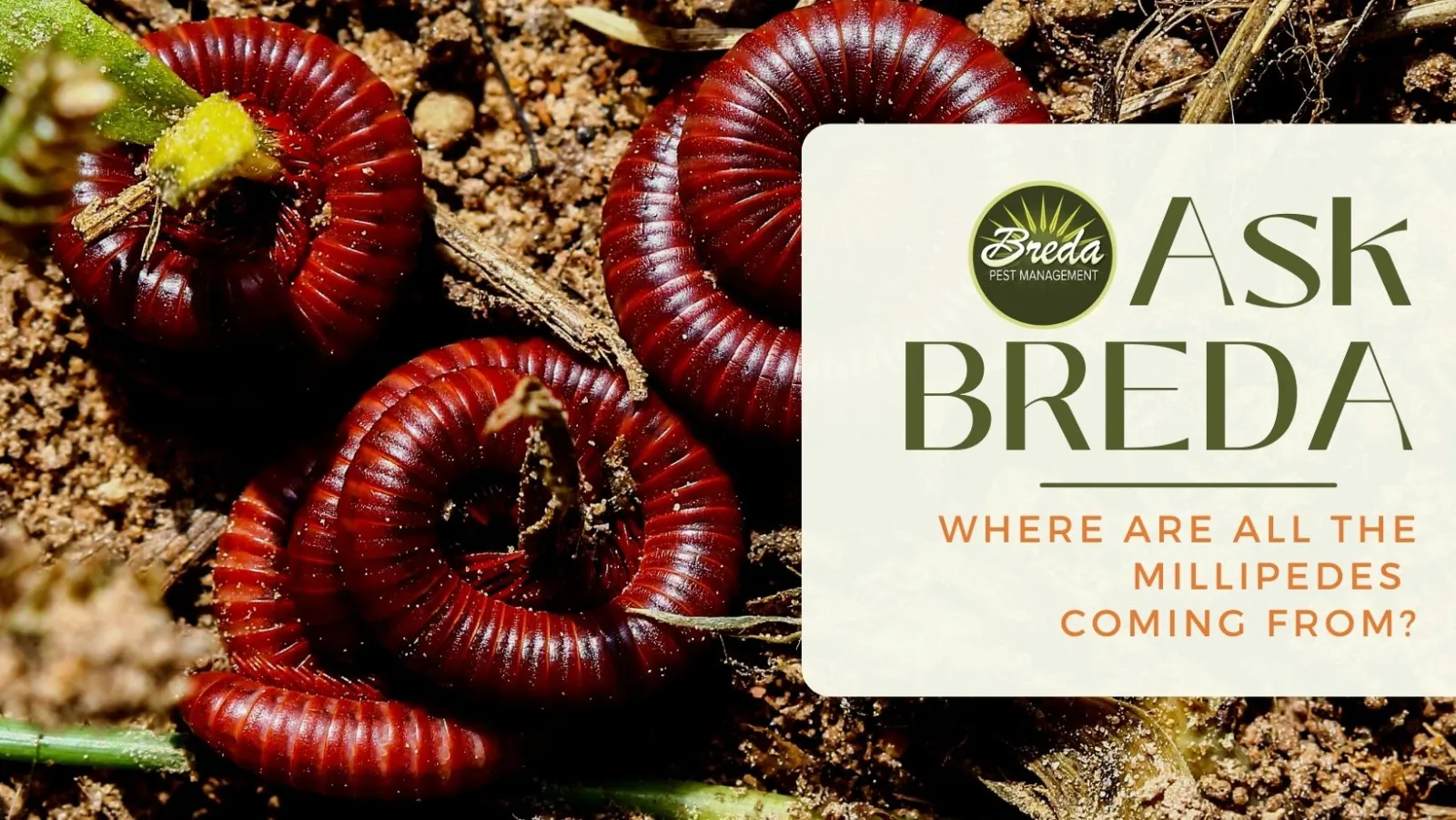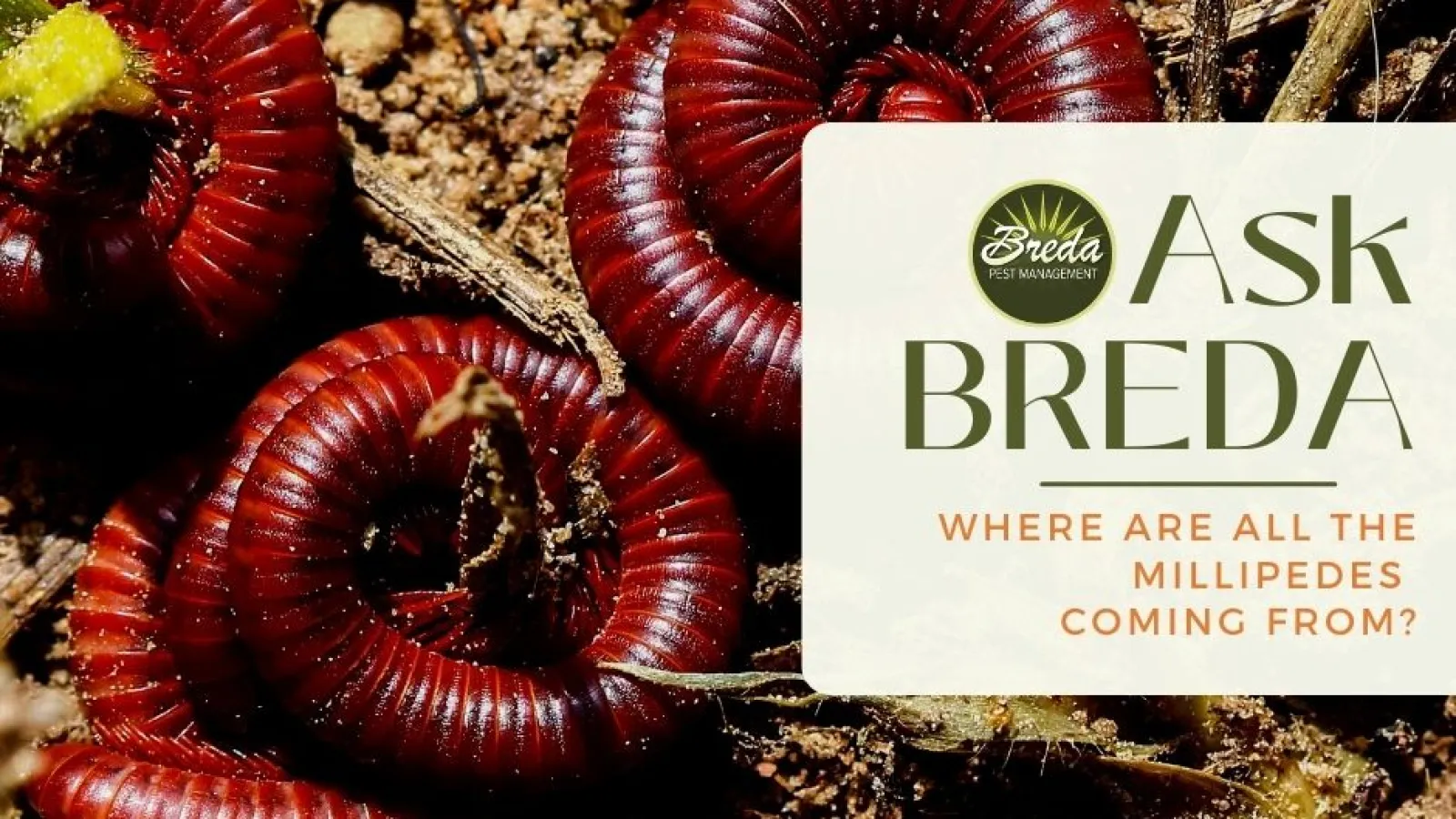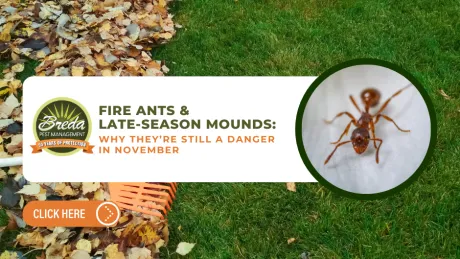
Learn some facts about Georgia millipedes!
We love providing Metro Atlanta homeowners with superior pest control service and top-notch information on how to combat common insects and critters in Georgia. But we also know that sometimes you just have a random question you'd love a quick answer for.
If you've got a pest question, reach out to us on Facebook and Instagram with your question and use the hashtag #AskBREDA. Then check back to the blog each month to see if we tackle your question!
This month, we received these questions:
Question: How do I get rid of millipedes?
'Tis the season for these slippery little guys to start making their appearance! While doing any kind of lawn care in the cooler months, fallen leaves are often blown off the lawn and under the back deck or bushes that stay green in cold temperatures. After all, who's going to see the leaves under azaleas in the winter? But, these fallen tree and bush leaves break down over time and provide rich, organic matter for millipedes to feast on as they overwinter in our soil, essentially serving as a magnet that draws them straight to your home in the spring.
When you cut your grass for the first time in spring, make sure you properly remove those lawn clippings. Have you ever seen a landscape company blow off the grass after mowing? This is a huge benefit to you for prevention of gnats and millipedes, because those grass clippings will produce rich, organic matter for the millipedes to feast on. Insecticidal treatments can be done to eliminate millipedes, but next year, focus on those leaves and grass clippings and watch how millipedes magically disappear.
Question: What's the difference between millipedes and centipedes?
While they do look very similar, there are huge differences between a millipede and a centipede. House centipedes are actually beneficial in that they eat other insects. You may see a house centipede here or there, but if you do, you likely have a food source—INSECTS! Centipedes might seem like a pest protection knight in shining armor, but finding them means you likely need to give them some assistance and start treating your home.
Unlike the relatively "Lone Ranger" centipede, millipedes will come inside your home by the hundreds. Millipedes are often seen dead in the lowest level of the home by the outside walls, because they were drawn to the exterior of your home by decaying plant matter and decided to venture indoors to see if the buffet continued. There's nothing inside for the millipedes to eat and because they are a high moisture insect, when millipedes come indoors, they dry out and die. If you want to dive even deeper into the difference between the two insects, here's a great article to check out!
If you find yourself needing pest control and want it handled thoroughly, don't hesitate to give us a call. The BREDA Guarantee promises to fix your pest problem and keep it fixed—no matter the circumstances. Schedule a consultation online or give us a call at 770-466-6700.



